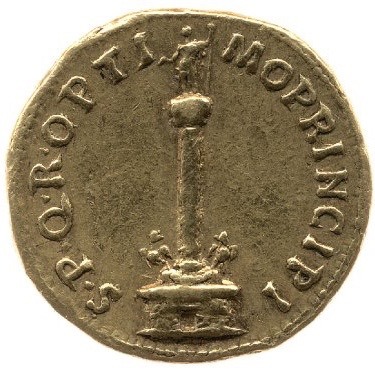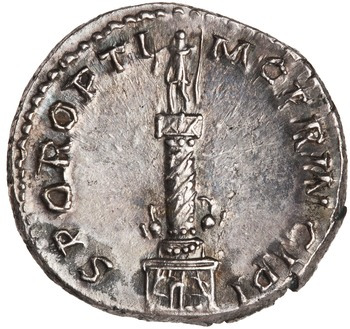Coins

Roman aureus from 112-114 CE depicting Trajan's Column with emphasis on height.

Roman denarius from 112-114 CE depicting Trajan's Column, with decorated frieze and balcony.
Depictions of Trajan’s Column that have been found on ancient coins indicate which attributes of the monument were most important to the Romans during that time. An aureus, or gold coin, from 113 AD showcases the monumental size of the column and emphasizes the statue of Trajan that stands at the very top. The height of the column is approximately three-quarters of the coin’s diameter, and the statue of Trajan looks to be around one-third of the column’s height. Evidently, the sizes of the statue and the column on the coin are not proportional to their sizes in real life. Their exaggerated heights indicate that they are the elements that the artist chose to emphasize the most. The sculptural reliefs on the columns have not been depicted at all, a clear sign that this specific artist was not interested in showing that aspect of the column. A denarius, or silver coin, from the same time period however, emphasizes more of the decorations on the surface of the monument, and even hints at the presence of the balcony just below the statue of Trajan.